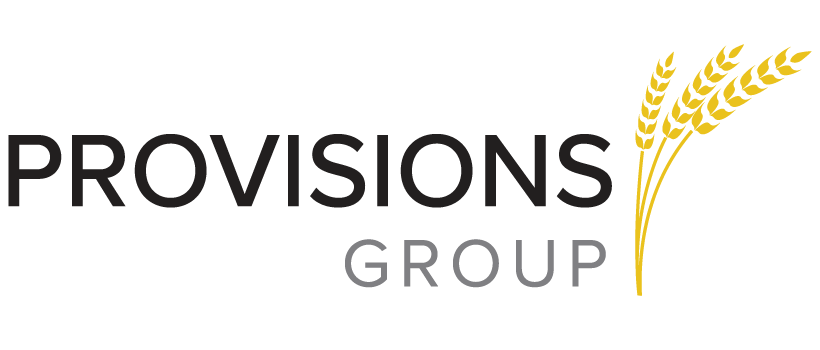End-to-end IT solutions for healthcare organizations.

Five Notable Technology Trends of 2023
2023 will be an exciting year for consumer, business, and enterprise technology! If you’re a business leader trying to decide which trends might matter to you the most, we wanted to create a brief guide to what we feel are five of the most important technology trends to watch and possibly leverage this year. We hope you enjoy this article and that you reach out with any questions about anything in this high-level introduction or if you need assistance in implementing any of them in your organization.
Chatbot Powered or Conversational UIs
A lot has been said recently about OpenAI’s ChatGPT, and so we won’t comment much on that specific technology here. Though it is extremely exciting and, as a generative technology, will create a groundswell of awareness and interest in ways that technology can assist content creators and a variety of others to write, create, build, and solve real-world challenges. More on ChatGPT in the next trend. But, before we talk about what ChatGPT and so many other technologies can create, this first trend talks about the increasingly common shift towards conversation and chatbot-powered user interfaces. The last several years have demonstrated the importance of designing and building software that accounts for users’ desire to interact with software in a more conversational – using English phrases – way. Whether it is a chat style UI within analytics and dashboard tools – e.g., natural language queries in Microsoft Power BI – or it’s the ever-growing list of ChatGPT style AI (Artificial Intelligence) powered chatbots – e.g., Jasper Chat or Chatsonic, it’s clear that there has been and will continue to be a trend towards providing natural language as a means to interact with software and data.
Pervasiveness and Accessibility of Generative AI
Building on this first trend, but to highlight that there is more going on than just the hyped ChatGPT, there has been a titanic increase in the availability of affordable services that can leverage AI to generate content. Of course, one of those is ChatGPT and its use of the deep learning GPT-3 language model to generate human-like text. This and the previously mentioned trend have been building for years, going back to 2009 and Wolfram|Alpha – an answer engine developed by Wolfram Research – in which technical computing and human language have been used to provide precise answers to complex questions. This service is still available today and continues to provide an increasingly broad list of data sources it can use to provide answers to complex questions. Whether WolframLanguage, GPT-3, or the many others which are powering our search and commerce experiences (e.g., BLOOM, GLaM, BERT, LaMDA, OPT, AlexaTM), the advancements in natural language AI models and algorithms have been and will continue to be staggering in 2023. Beyond interpreting and generating plain text, there are also several services that can use plain text prompts to generate completely royalty-free and original images. These include DALL-E – also from Open AI – as well as Midjourney, Craiyon, and Stable Diffusion.
Zero Code UX-to-App
Continuing to stay on the themes of generative and AI-powered technologies, there have also been some major advancements in the field of UX and design. In 2018 there was an innovation – that is now in 2023 starting to show signs of life in the market – by the UX Design product Figma. In 2018 when they released the Figma Platform, this opened up the possibility of taking a design in their tool and, amongst other use cases, automatically using that to generate a fully functional application. The ecosystems and development automation vendors took a few years to create solutions based on that platform, but now in 2023, there are quite a few and very impressive solutions that allow you to take a UX developed in a design tool, though now Figma is not the only option, and without writing any code at all, generate a fully functional app. Two of the most impressive and large companies to stand behind solutions like this are AWS (Amazon Web Services) Amplify Studio – which can take a Figma UX and generate a working React app, and Microsoft Power Apps Express Design – which can also use a Figma design to general a working Power App. While there are others beyond this, a few that are impressive as well are Pagedraw, Anima, Unify, Quest AI, and Buzzy. It will be exciting to watch this trend continue to develop in 2023 and beyond as UX designers and developers – both traditional engineers and citizen developers – move closer together in their creative processes. More usable software at a fraction of the cost sounds like a great promise, and in 2023 it seems that we may have almost arrived at that point.
Cloud Platform Openness, Interoperability, and Hybrid
Moving away from AI and computer-assisted content/app generation, this next trend focuses on the interesting trend we see in the public cloud arena where surprisingly, cloud vendors – Microsoft, Amazon, Google, IBM, Oracle, and others are recognizing the value in providing tools to manage across multi-cloud or hybrid-cloud deployments. Because of the 5–7-year-old trend of cloud migrations, hybrid-cloud options have been around for that long – often supporting organizations that can move some but not all of their workloads to the public cloud. While those technologies have continued to advance, the most exciting trend has been in the support from public cloud vendors for other public clouds. Whether AWS Outposts, IBM Cloud Satellite, Oracle Interconnect for Microsoft Azure – the ability to manage your workloads centrally while provisioning and operating your cloud from multiple providers – taking advantage of the services or costs or regionality offered by those providers, this is a trend to watch. Particularly exciting is Azure Arc and Google Anthos, which when combined with Kubernetes, provide impressive access to platform services that historically would have only been accessible in their unique cloud. This extends capabilities beyond the boundaries and scope of a single cloud but provides a centralized management fabric that decreases some of the risks of sprawl and complexity associated with going multi-cloud.
Integration and Analytics Data Lake Convergence
The last trend for 2023 we’d like to share is the prevalence of historically big data solutions –i.e., Apache Spark – within the scope of smaller and less complex data warehouse and data management solutions. This trend is largely being fueled by the Spark platform vendor Databricks, but the implications of the pattern have become present in the large cloud providers. Historically, the idea of a data lake – using Spark, Hadoop, and cloud-based storage like AWS S3 or Azure Blob Storage – was a separate and differently managed and scaled solution. This led to complexity at both the systems level (when combined with data warehouses, data marts, streaming solutions, etc.) as well as the data management level (more ETL, more logic, and more technical boundaries to cross). With Databricks Delta Lake – a storage framework developed by Databricks, but now open source – all data management can occur within a shared environment. This provides a common query environment and storage location for all data management. While originally released by Databricks, AWS Athena, Azure Synapse, Google Dataproc, and many others leverage this pattern and technology to enable something known as a Data Lakehouse (the combination of Data Lake and Data Warehouse). In addition to Delta Lake, there have also been other technologies like Hudi and Iceburg that will also contribute to this unified approach to data management. We believe that while this pattern predates 2023 by 2-3 years, there will be a significant adoption and innovation uptake this year.

